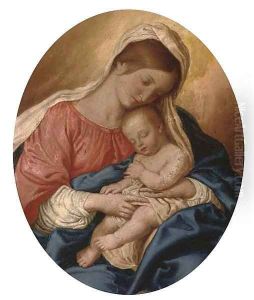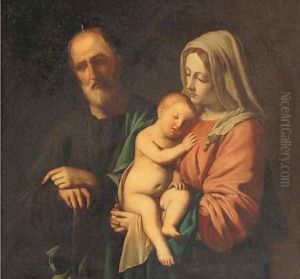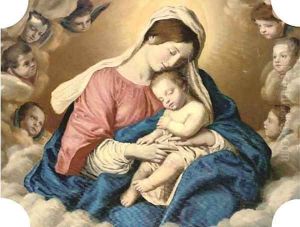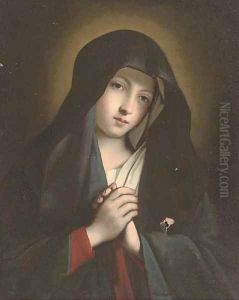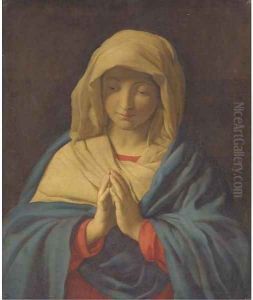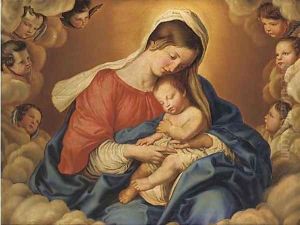Giovanni Baptista Salvi, Called Sasseferroto Paintings
Giovanni Battista Salvi, also known as Sassoferrato, was a prominent Italian painter of the Baroque era, born in 1609 in the small town of Sassoferrato in the Marche region of Italy. His nickname, Sassoferrato, is derived from his place of birth. He was known for his devout religious paintings and a style that reflected the influence of the Bolognese School as well as the Roman classicism of his time.
Sassoferrato's works are characterized by their serene and devout nature, often featuring the Madonna in various guises. His paintings demonstrate a mastery of technique, with a particular emphasis on the effects of light and shadow, as well as a refined use of color. Unlike many of his contemporaries, Sassoferrato did not focus on dramatic narratives or complex compositions. Instead, he opted for simplicity and clarity, which gave his works an air of timeless devotion.
Sassoferrato's education as an artist began under the guidance of his father, Tarquinio Salvi, who was also a painter. He later went on to study in Rome, where he was influenced by the works of Raphael and the Bolognese artists Domenichino and Guido Reni. Despite the prevailing trends of the Baroque period which favored dynamic composition and emotional intensity, Sassoferrato maintained a more restrained and classicizing approach in his paintings. This traditionalist style earned him considerable success, especially among private collectors and religious institutions.
Throughout his career, Sassoferrato was mainly active in Rome and the surrounding regions. He did not have a large workshop or many students, which was common among artists of his time. His approach to art was deeply individualistic, and he dedicated himself to creating artworks that reflected his own personal piety and devotion.
Sassoferrato's legacy is comprised of a vast number of religious paintings, many of which are still housed in churches and museums across the world. Some of his most famous works include 'The Virgin in Prayer,' 'The Immaculate Conception,' and 'The Madonna and Child.' His ability to convey the sacredness of his subjects with such grace and serenity has continued to inspire viewers long after his death in 1685. Today, Sassoferrato is remembered as a master of Baroque religious painting, whose works continue to evoke a sense of peace and divine presence.
